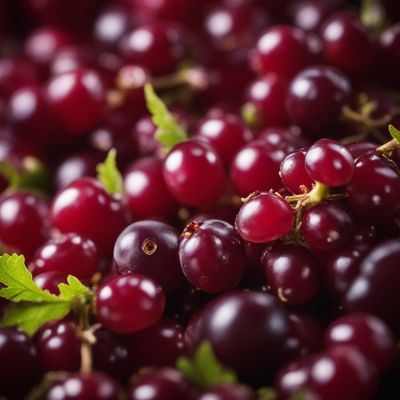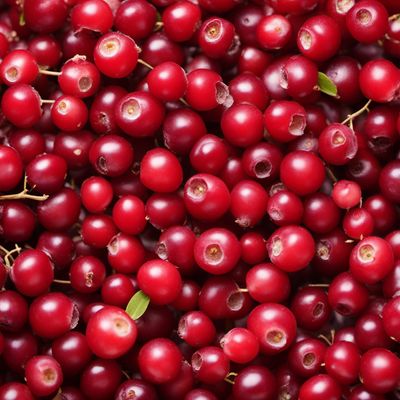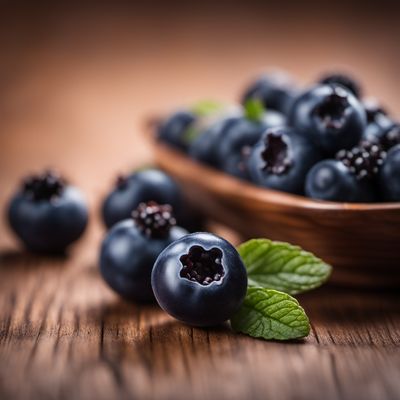
Ingredient
Jostaberries
The Tangy Delight: Unveiling the Secrets of Jostaberries
Jostaberries are small, round berries that resemble a cross between a gooseberry and a blackcurrant. They have a glossy, deep purple skin and a translucent green flesh. The berries are known for their tangy and slightly sweet taste, with a hint of tartness. Their texture is firm yet juicy, providing a delightful burst of flavor with every bite.
Origins and history
Jostaberries were first developed in Germany in the late 1970s by crossing blackcurrants and gooseberries. The aim was to create a fruit that combined the best qualities of both parent fruits. Since then, jostaberries have gained popularity in Europe and North America. They are now cultivated in various regions, including Germany, Poland, the United States, and Canada.
Nutritional information
Jostaberries are a rich source of vitamin C, providing more than double the amount found in oranges. They also contain significant amounts of vitamin K, fiber, and antioxidants. With only around 40 calories per 100 grams, jostaberries are a nutritious addition to any diet.
Allergens
Jostaberries are not known to be associated with any common allergens.
How to select
When selecting jostaberries, look for berries that are plump, firm, and free from blemishes or mold. The skin should have a vibrant purple color, indicating ripeness. Avoid berries that are overly soft or have a dull appearance.
Storage recommendations
To maintain the freshness and quality of jostaberries, store them in the refrigerator in a breathable container or a perforated plastic bag. They can stay fresh for up to a week. Alternatively, jostaberries can be frozen for long-term storage.
How to produce
Jostaberries can be grown by amateur gardeners in temperate climates. They thrive in well-drained soil and require full sun exposure. Planting jostaberry bushes in early spring and providing regular watering and pruning will help ensure a successful harvest.
Preparation tips
Jostaberries can be enjoyed fresh or used in various culinary preparations. They are often used in jams, jellies, pies, and desserts. To prepare jostaberries, rinse them gently under cold water and remove any stems or leaves. They can be eaten whole or used in recipes that call for berries. The tangy flavor of jostaberries pairs well with both sweet and savory dishes.
Culinary uses
Jostaberries are commonly used in jams, jellies, and preserves due to their high pectin content. They can also be used in pies, tarts, and desserts, adding a tangy twist to traditional recipes. Additionally, jostaberries can be incorporated into sauces, marinades, and salad dressings, providing a unique flavor profile.
Availability
Jostaberries are commonly available in Germany, Poland, the United States, and Canada, where they are cultivated on a commercial scale. They can also be found in select farmers markets and specialty stores.
More ingredients from this category » Browse all

Bilberries (generic)
The Secret Superfood: Unveiling the Power of Bilberries

Juneberries
The Sweet Delight of Juneberries

Aronia berries
The Mighty Antioxidant Powerhouse

Native currant
The Indigenous Jewel

European barberries
Tangy Gems: Exploring the Delights of European Barberries

Golden currant
The Fragrant Spice of Delight

Lingonberries and similar
The Tart and Tangy Delights: Exploring Lingonberries and Similar Berries

Serviceberries
The Berry of Abundance

Blueberries
Bursting with Antioxidant Power: The Vibrant World of Blueberries

Sea buckthorns
The Tangy Treasure of the North

Huckleberries
The Wild Delicacy: Unveiling the Enchanting World of Huckleberries

Salal
The Wild Berry: Salal